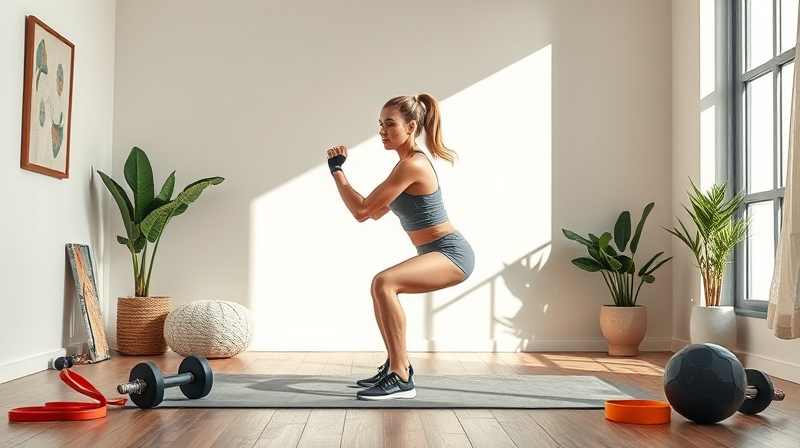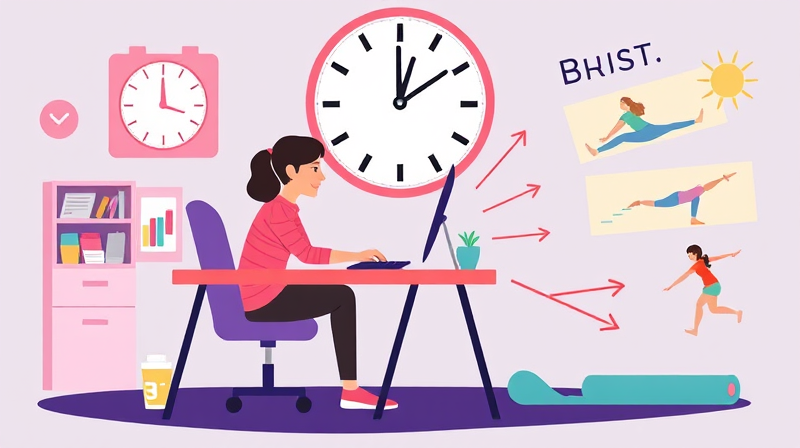In our fast‐paced world, finding the time for exercise can be challenging, yet it is essential for improving our overall health, strength, and fitness. Resistance training is a powerful way to build muscle, improve metabolism, and enhance overall functional strength, making it a must-have component of your wellness routine. The truth is, you do not need long sessions or fancy gym memberships to harness these benefits. With a little creativity and planning, you can easily integrate resistance exercises into your daily schedule.
This article will provide you with practical strategies that are not only effective but also flexible enough to fit into your busy lifestyle. Whether you are a seasoned athlete or a beginner, these tips are designed to inspire you to start small and gradually build healthier, stronger habits.
Simple Steps to Integrate Resistance Training
One of the major hurdles in starting a new fitness habit is the misconception that you need to dedicate hours daily to see results. This simply isn't true for resistance training. In fact, short and effective workouts can be integrated into your routine without sacrificing your other commitments.
Begin with 20-30 minute sessions 2-3 times a week. High-intensity interval training (HIIT) can be particularly effective as it combines bursts of cardio with strength training to provide a time-efficient workout that boosts endurance and aids weight management. This strategy not only saves time but also keeps your workout engaging and challenging.
For those moments when you are pressed for time, consider using bodyweight exercises that require no gym or equipment. These exercises can be performed in any space, making them ideal for a busy schedule.
- Squats: Very effective for targeting the major muscle groups in the lower body, including the quads, hamstrings, and glutes.
- Push-ups: These help work your chest, triceps, and core all at once, providing a solid upper-body workout.
- Lunges: A fantastic way to build leg strength and stability, improving balance and core strength.
If you find it difficult to allocate time for a workout session, try to incorporate exercise into your everyday activities. Small changes can add up to big results over time. For example, performing squats while brushing your teeth, or doing lunges during TV commercial breaks, can be surprisingly effective when done consistently.
Another smart strategy is to integrate resistance training tools into your home environment. Investing in minimal yet versatile equipment such as dumbbells, resistance bands, or kettlebells can significantly enhance your workout options. These tools help not only in building muscle but also enable you to complete a variety of exercises right at your doorstep.
For those looking for a structured routine, consider the 7-exercise home workout. This routine seamlessly targets multiple muscle groups and is ideal for quick, efficient training sessions. The routine includes an assortment of exercises: scapular pinches, wall angels, pushups, planks, squats, lunges, and bridges. Aim for 10-20 repetitions of each exercise, repeating the circuit 2-3 times to cover a well-rounded session that boosts overall strength and endurance.
Another way to make sure you do not miss your workouts is to treat them as important appointments. Block specific times during your day—whether early mornings, lunch breaks, or evenings—to indulge in your exercise routine. Scheduling your workouts helps in prioritizing your health and ensures consistent progress over time.
Moreover, focus on compound movements that engage multiple muscle groups at once. Exercises like squats, deadlifts, and bench presses are not only time-efficient but also extremely effective at building overall strength. By working several muscles simultaneously, you are optimizing the benefits of every movement you perform.
As you progress, don't forget the importance of gradually increasing intensity. Progressive overload is key — as your muscles adapt, increase the weight, sets, or repetitions to continuously challenge yourself. This approach prevents plateauing and results in consistent muscle growth and improved performance.
For some, the social and structured environment of a class can add accountability and motivation. If you have access to a gym, exploring strength training classes or circuit training sessions may enhance your routine. Classes like Lagree Pilates combine elements of resistance training and cardio to deliver a powerful and efficient workout.
Finally, while the drive to push through every session is admirable, it is equally important to listen to your body. Rest and recovery are not signs of weakness—they are vital for muscle growth and long-term progress. Taking time off when necessary helps prevent overtraining and keeps you motivated and healthy in the long run.
By incorporating these practical strategies into your everyday schedule, you create an environment that fosters passion, consistency, and well-being. Whether you are blending exercise into daily activities or setting aside dedicated workout times, every small step brings you closer to a stronger, healthier version of yourself.
Remember, it’s not about perfection, but about progress. Each of these tips offers an accessible way for anyone to adopt resistance training into their daily life. Embrace the journey, and let the challenges inspire you to push forward, knowing that every repetition is a step toward a better tomorrow.








